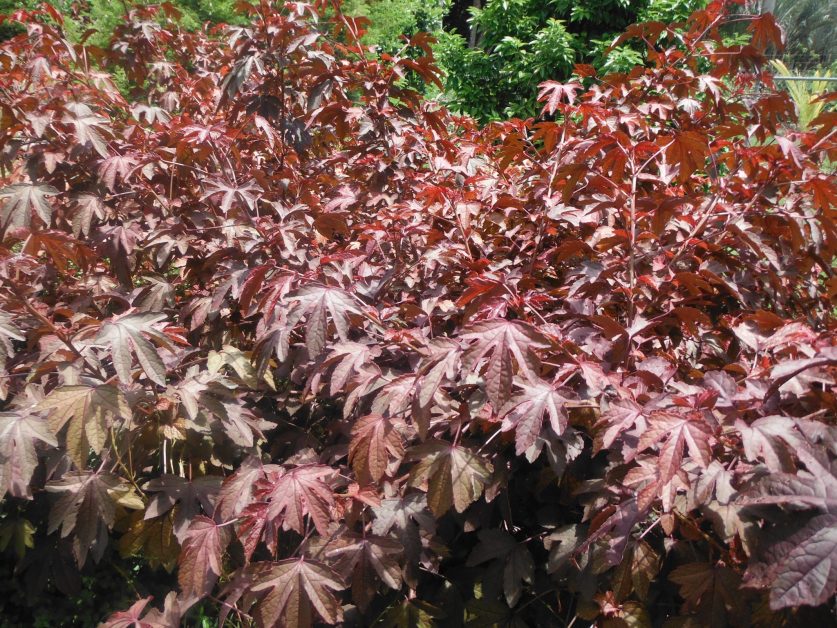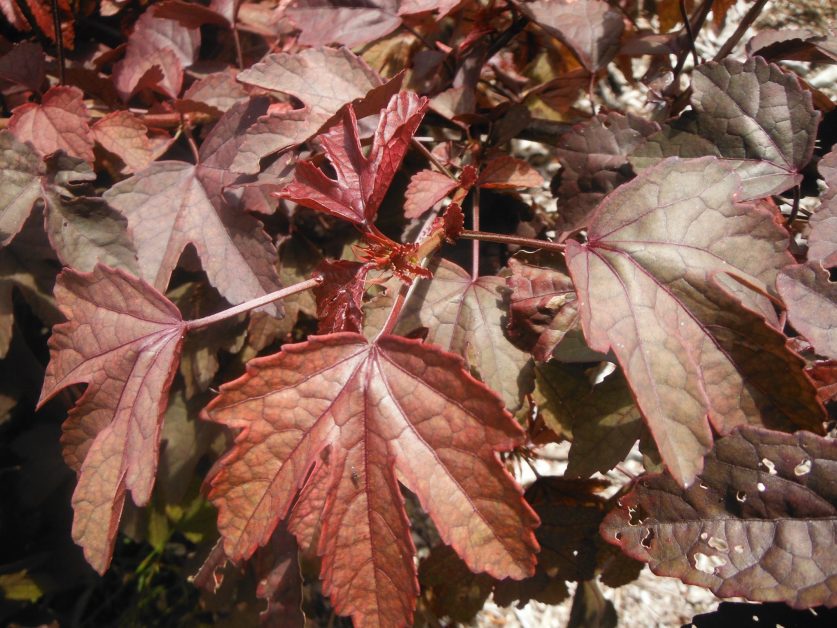Hibiscus That Tastes Like Cranberry Sauce!!!
It sounds like a headline out of the National Enquirer, but it’s true. Hibiscus sabdariffa, commonly known as roselle, not only has the capacity to taste like our popular condiment, but it has other tasty and valuable properties as well.
As with many plants whose usefulness has led to their introduction to lots of places, there is a bit of mystery as to where H. sabdariffa is native. Many experts believe that it originated in Western Africa, although others contend that it is native to a swath of countries from India to Malaysia.
Roselle is a small shrub that matures in the 3-4 ft. range. It produces red flowers 3-4 in. in diameter. The floral parts known as sepals and calyces are used to make a variety of teas and cold drinks around the world. Throughout the Caribbean, for instance, the drink known as sorrel is made by boiling the sepals and calyces of Roselle. In addition, the calyces can be turned into a sauce or pie filling by boiling them with sugar. It is that concoction that is a dead ringer for cranberry sauce in taste.
Dried calyces are pressed into large spheres or cakes and shipped to European countries for use in flavoring liqueurs. The leaves of H. subdriffa are also valuable. They can be cut up into salads or soups, or dried, steamed, or fried in a number of other dishes.
Fiber from the stems of roselle is used to fabricate a substitute for jute in burlap bags, but the plant has long been incorporated into folk remedies around the world. It has begun to gain scientific attention for its possible medicinal properties.
Roselle has a long history in Florida. One authority believes that the plant was introduced to Florida about 1887 from Jamaica. Plants of H. sabdariffa appear to have been grown at the USDA subtropical lab in Eustis in the 1890s, but they were wiped out by the famed 1895 freeze, the same event that gave rise to the legend of Julia Tuttle’s gift of fresh citrus flowers to Henry Flagler as a come-on to extend his railroad to Miami. Just after the turn of the 20th century, roselle was said to be commonly grown in southern Florida; at some point, calyces were sold in local markets. It remained a popular garden crop in southern and central Florida until just past World War II.
With a track record of well over 100 years of cultivation in southern Florida, there’s no question that the versatile roselle can handle the region’s limestone-based soils. Richard Lyons’ Nursery has two cultivars of H. sabdariffa, one with green leaves and one with red leaves. The plants are available in 1- and 3-gal. containers.
- Hibiscus sabdariffa (Edible Roselle)
- Hibiscus sabdariffa (Edible Roselle)
- Hibiscus sabdariffa (Edible Roselle)



